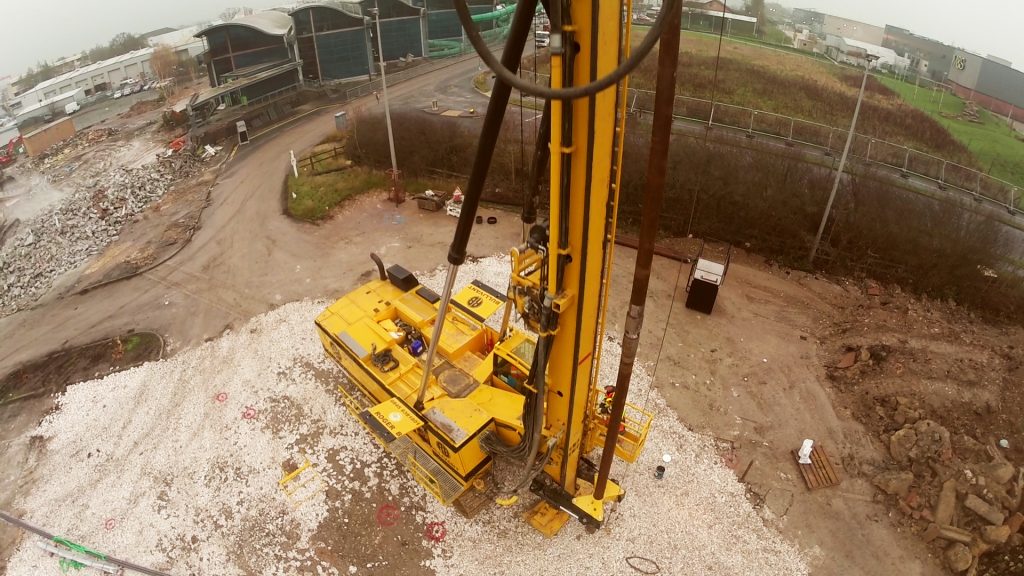In the ever-evolving construction world, sustainability has risen as a crucial factor within the construction landscape. At Roger Bullivant Limited (RBL), we are committed to driving sustainable practices that meet the demands of modern construction and significantly reduce environmental impact, with an overall goal to reduce our carbon footprint by 40% by 2030. One of the ways we are achieving this is by encouraging our clients to use Continuous Helical Displacement (CHD) piles over traditional Continuous Flight Auger (CFA) piles and incorporating low-carbon concrete for all piling solutions.
The Sustainable Edge of Continuous Helical Displacement Piles
1. Reduced Soil Disturbance and Waste
CHD piles offer a major advantage in minimising soil disturbance compared to CFA. The helical design of CHD allows for precise soil displacement rather than removal, which reduces the amount of excavated soil and mitigates the impact on the surrounding environment. This technique not only preserves soil structure but also generates less spoil, reducing the need for soil disposal and handling.
2. Improved Efficiency in Construction
By displacing soil rather than removing it, CHD piles require less time on site, which translates to reduced machinery usage and lower energy consumption. The enhanced efficiency of the installation directly contributes to a lower carbon footprint, making it a more sustainable option compared to traditional CFA methods.
3. Enhanced Load-Bearing Capacity
CHD is designed to achieve enhanced load-bearing capacity in various soil conditions compared with CFA piles of similar dimensions, due to the compaction of the soil during boring. In some ground conditions improvements of up to 30% have been demonstrated. This improved performance means shallower piles are required to achieve the same structural support, which further reduces material usage and overall environmental impact. The ability to meet demanding engineering requirements with fewer resources aligns perfectly with our sustainability goals.
Integrating Low Carbon Concrete for Insitu Piling
At RBL, our commitment to sustainability extends beyond our piling techniques to the materials we use. We are proud to incorporate low-carbon concrete in our insitu piling projects.
1. Lower Carbon Footprint
Low-carbon concrete is formulated with alternative materials and technologies that reduce the amount of carbon dioxide emissions compared with traditional concrete mixes. By using these innovative concrete mixes, we are significantly lowering our projects’ overall carbon footprint.
2. Support for Circular Economy
Our use of low-carbon concrete supports the principles of a circular economy by incorporating recycled materials and reducing the need for virgin resources. This approach minimises waste and promotes the reuse of materials, further enhancing the sustainability of our projects.
As we continue to innovate and improve our practices, we remain focused on our core values of sustainability, efficiency, and excellence. By choosing Roger Bullivant Limited, you are partnering with a company that is not only at the forefront of engineering excellence but also dedicated to making a positive impact on our planet.
For more information on our sustainable piling solutions and how we can support your next project, contact us today. Together, let’s build a foundation for a sustainable future.




